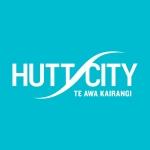New SMART card gives access to more than 500,000 library items
Local library users can now choose to become SMART library members and gain access to more than half a million library items across 23 libraries.
The SMART libraries initiative is New Zealand’s only tertiary and public library collaboration giving new and existing library members at Hutt City, Porirua City, Kapiti Coast, Masterton District, Whitireia New Zealand and Wellington Institute of Technology (WelTec) libraries the option to swap their local library card for a regional SMART card.
SMART cards can be used at any participating library to view and reserve items and have them delivered to the library most convenient for pick up, free of charge. SMART card holders can also drop items off at any of the 23 participating libraries.
There is no cost to become a SMART library member.
Kapiti Coast District Libraries’ Manager Leslie Clague says the initiative is about giving local library members more choice and greater access to resources.
“The 23 libraries involved have been working together for the past year to make this happen.
“It’s been a busy and exciting year and we’re extremely proud to be offering the SMART card to our customers and the enhanced services it provides,” she says.
Co-ordinator and Hutt City Libraries Digital Services Manager Annette Beattie says the SMART project is recognised by local government chief executives as a particularly successful shared services collaboration.
“Work to date has focussed on streamlining and standardising systems, policies, processes and charges across the six organisations involved and it’s rare to have so many organisations collaborating successfully on such a major scale,” she says.
The next phase of the SMART Libraries collaboration will be the continued enhancement of products and services across the region including the roll-out of downloadable ebooks and audio books, RFID (radio frequency identification), additional Web 2.0 products, and improved access to local and family history resources.
